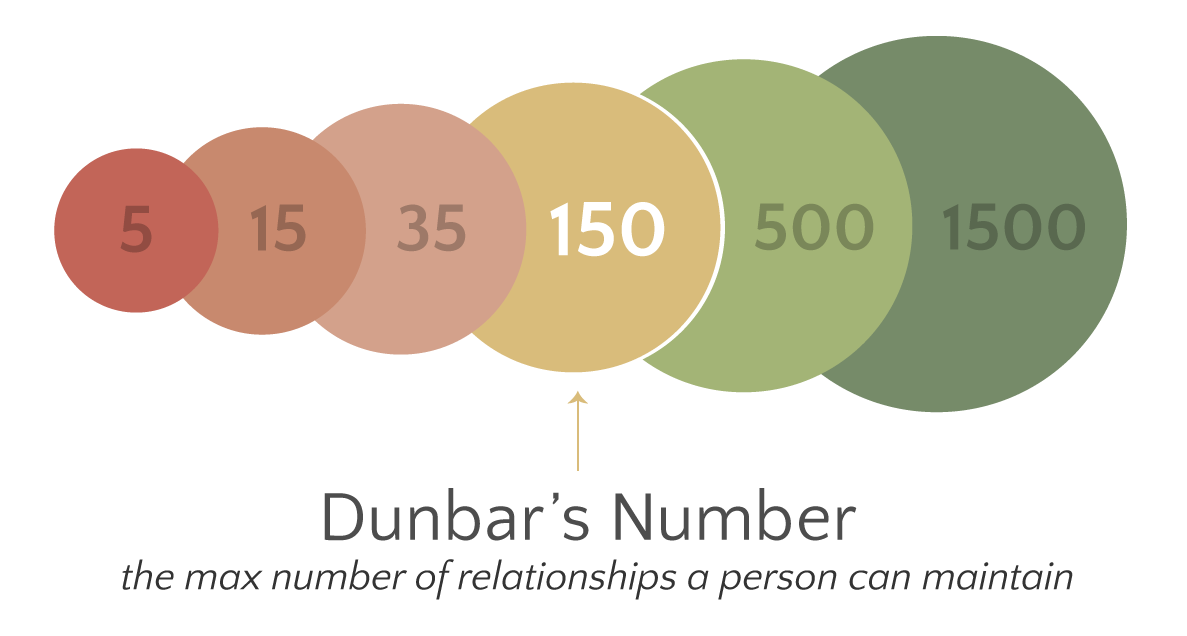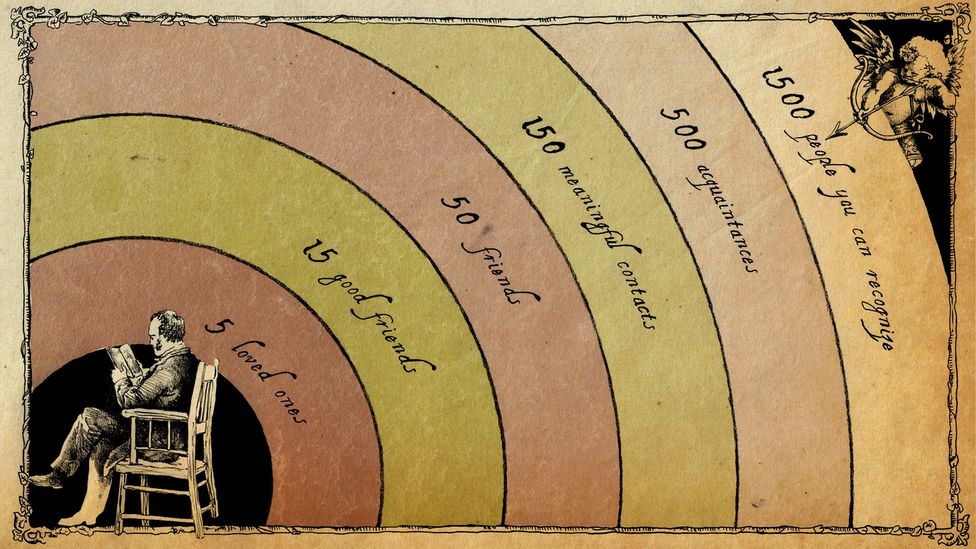
people fell into circles of relative closeness—family, friends, neighbors, and work colleagues
The psychological demands of living in large groups mean that, in primates, species-typical group size correlates rather closely with the species’ brain size. On the primate model, our oversized brain would predict a group size of around 150, the number now known as Dunbar’s Number. We find it in the typical community size of hunter-gatherer societies, in the average village size in county after county in the Domesday book, as well as in 18th-century England; it is the average parish size among the Hutterites and the Amish (fundamentalist Christians who live a communal life in the Dakotas and Pennsylvania, respectively). It is also the average personal network size – the number of people with whom you have a personalised relationship, one that is reciprocal (I’d be willing to help you out, and I know that you’d help me) as well as having a history (we both know how we came to know each other).
The Hutterites illustrate rather clearly just what’s involved. They deliberately split their communities once they exceed 150 individuals because, they maintain, you cannot run a community of more than 150 people by peer pressure alone: instead, you need a police force.
We see the same principle at work in the management philosophy of the Gore-Tex company, known for its breathable, waterproof fabrics. Instead of expanding factory size as its business grew, the late “Bill” Gore kept this factory size to 150 and simply built a new, completely self-contained factory next door. The result is a work community where everyone knows everyone else, and there is no need for formal line-management systems or name badges; everyone is committed to each other and to the communal vision. Has this been the secret to its unusual success as a business?
Perhaps the best example, however, remains the military. All modern armies have a similar organisational structure, mostly developed over the last 300 years by trial and error on the battlefield. The core to this is the company – typically around 120-180 in size – almost exactly Dunbar’s Number. As anyone who has been in the army will tell you, company is family, far more so than battalion or regiment.
Although wild claims have been made about the number of friends people have on Facebook, the vast majority of us have only 120-130. Yes, you can have 500 or 1,000 friends if you want to sign people up, but this seems to have more to do with competition than with real friendship.
On average, we have five intimate friends, 15 good friends (including the five intimate ones), 50 friends and 150 acquaintances. While it is not altogether clear why our relationships are constrained in this way, one possibility is time. A relationship’s quality seems to depend on how much time we devote to it, and since time is limited, we necessarily have to distribute what time we do have for social engagement unevenly. We focus most of it on our inner core of five intimates. Alternatively, it might just be a memory problem: we have a job keeping track of who’s doing what, and can only really keep serious tabs on the inner core of five.
But there is one more serious problem lurking behind all this. In traditional small-scale societies, everyone shares the same 150 friends. This was true even in Europe until well into the 20th century, and probably still is true today of isolated rural communities. You might well fall out with them from time to time, but, like the Hutterites, you are bound together by mutual obligation and densely interwoven relationships. And of these, shared kinship was perhaps the most pervasive and important: offend Jim down the road, and you bring granny down on your back because Jim is her second-cousin-once-removed, and she’s got her own sister, Jim’s grandmother, on to her about it.
https://www.theguardian.com/science/2011/apr/25/few-people-dunbars-number
https://en.wikipedia.org/wiki/Dunbar%27s_number



